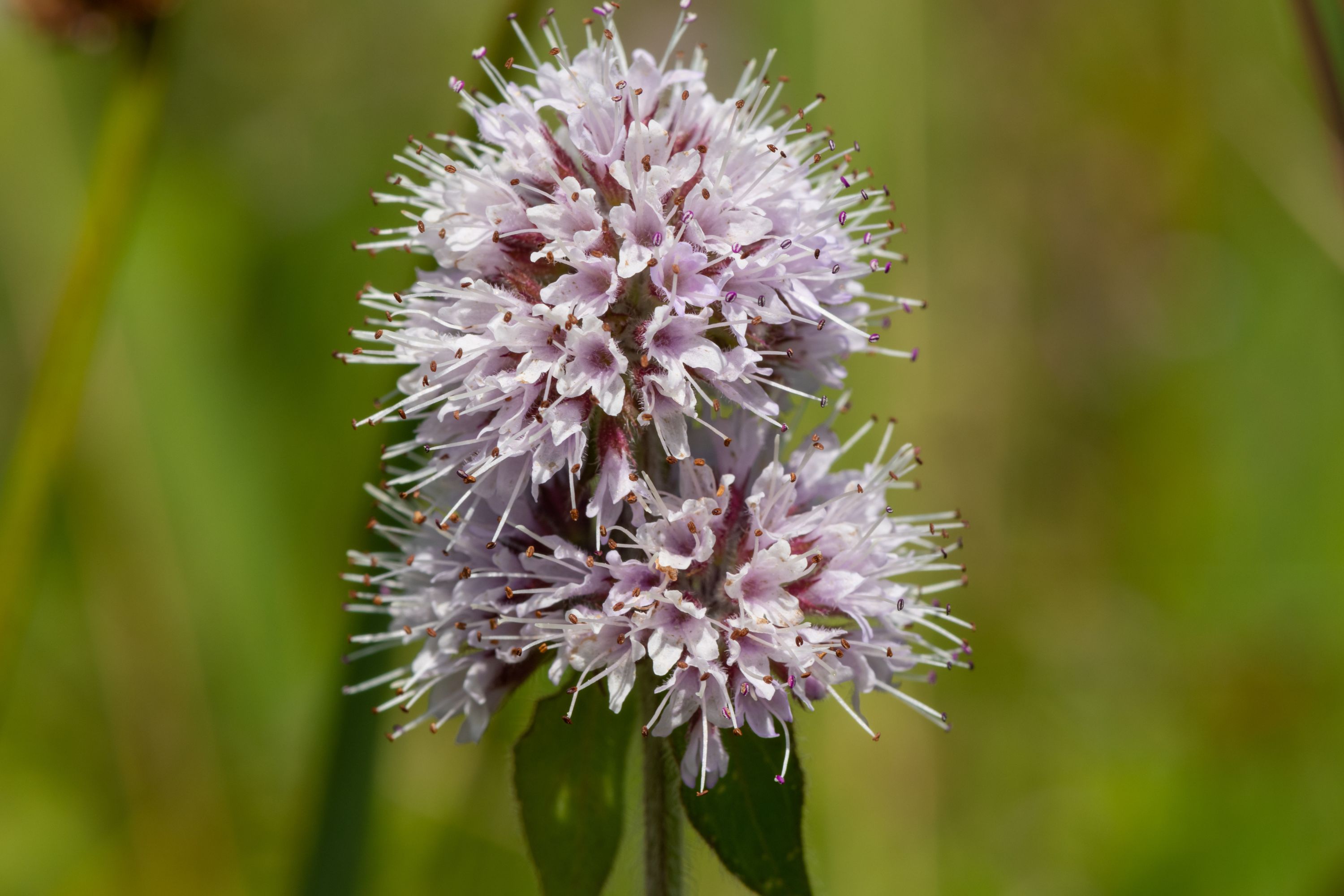Buruiana dalacului
(Mentha aquatica)

Description
Mentha aquatica (water mint; syn. Mentha hirsuta Huds.is a perennial flowering plant in the mint family Lamiaceae. It grows in moist places and is native to much of Europe, northwest Africa and southwest Asia. Water mint is a herbaceous rhizomatous perennial plant growing to 90 centimetres (35 in) tall. The stems are square in cross section, green or purple, and variably hairy to almost hairless. The rhizomes are wide-spreading, fleshy, and bear fibrous roots. The leaves are ovate to ovate-lanceolate, 2 to 6 centimetres (0.79 to 2.36 in) long and 1 to 4 centimetres (0.39 to 1.57 in) broad, green (sometimes purplish), opposite, toothed, and vary from hairy to nearly hairless. The flowers of the watermint are tiny, densely crowded, purple, tubular, pinkish to lilac in colour and form a terminal hemispherical inflorescence; flowering is from mid to late summer. Water mint is visited by many types of insects, and can be characterized by a generalized pollination syndrome, but can also spread by underground rhizomes. All parts of the plant have a distinctly minty smell. Unbranched, hairless plants, with narrower leaves and paler flowers, native to areas of Sweden and Finland near the Baltic Sea, have been called Mentha aquatica var. litoralis. As the name suggests, water mint occurs in the shallow margins and channels of streams, rivers, pools, dikes, ditches, canals, wet meadows, marshes and fens. If the plant grows in the water itself, it rises above the surface of the water. It generally occurs on mildly acidic to calcareous (it is common on soft limestone) mineral or peaty soils M. aquatica can occur in certain fen-meadow habitats such as the Juncus subnodulosus–Cirsium palustre plant association. It is a component of Purple moor grass and rush pastures – a type of Biodiversity ActPlan habitat in the UK. Mentha is a genus of plants in the family Lamiaceae (mint family). The exact distinction between species is unclear; it is estimated that 13 to 24 species exist. Hybridization occurs naturally where some species' ranges overlap. Many hybrids and cultivars are known. The species that make up the genus Mentha are widely distributed and can be found in many environments. Most grow best in wet environments and moist soils. Mints will grow 10–120 cm (4–48 inches) tall and can spread over an indeterminate area. Due to their tendency to spread unchecked, some mints are considered invasive.
Taxonomic tree:







